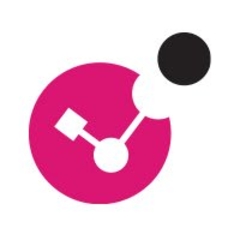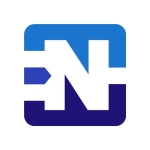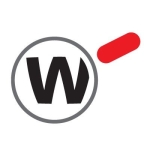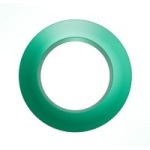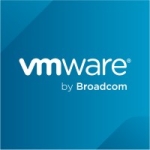
Consultant at a tech services company with 51-200 employees
User-friendly interface and reliable security empower financial institutions
Pros and Cons
- "I think it is secure and user-friendly."
- "Pricing in Jamaica is a major issue, with users often citing it as a reason for not using Check Point."
What is our primary use case?
I am based in Jamaica for the most part. Not a lot of people use Check Point CloudGuard Network Security due to pricing issues, but most banks still use it.
What is most valuable?
I think it is secure and user-friendly. The interface is easy to understand and the Check Point CloudGuard Network Security history assures me of its trustworthiness.
What needs improvement?
They could improve the documentation. The interface is fine for me since I have been using it for some time.
For how long have I used the solution?
I have been using network security from around 2003 or 2004.
Buyer's Guide
Check Point CloudGuard Network Security
December 2025
Learn what your peers think about Check Point CloudGuard Network Security. Get advice and tips from experienced pros sharing their opinions. Updated: December 2025.
879,422 professionals have used our research since 2012.
What was my experience with deployment of the solution?
Deployment usually takes about two days depending on the network.
What do I think about the stability of the solution?
I have not experienced any issues with stability such as lagging, crashing, or downtime.
What do I think about the scalability of the solution?
The scalability is fine. In Jamaica, the networks tend to be relatively small.
How are customer service and support?
I have not had to contact technical support or customer support for Check Point CloudGuard Network Security specifically, but I have contacted them for other Check Point products.
How would you rate customer service and support?
Positive
Which solution did I use previously and why did I switch?
I work with Cisco and FortiGate. FortiGate is popular in Jamaica, partly due to pricing. Users often choose cheaper options even if Check Point is considered better.
How was the initial setup?
The initial setup is fine. It is not difficult.
What about the implementation team?
I usually work with a team of about two or three people for deployment, totaling three or four including me.
What's my experience with pricing, setup cost, and licensing?
Pricing in Jamaica is a major issue, with users often citing it as a reason for not using Check Point.
Which other solutions did I evaluate?
I have experience with Cisco and FortiGate solutions.
What other advice do I have?
I advise new users to carefully look at the documentation and do their homework before starting deployments. Proper planning and preparation, supported by the documentation, are crucial. I would rate the solution about nine out of ten.
Disclosure: PeerSpot contacted the reviewer to collect the review and to validate authenticity. The reviewer was referred by the vendor, but the review is not subject to editing or approval by the vendor. The reviewer's company has a business relationship with this vendor other than being a customer: Implementer
Customer Operations Director at a computer software company with 51-200 employees
Helps to handle increased loads and firewalls
Pros and Cons
- "Some retail customers find the scale-up and scale-down features valuable, particularly with scale sets. This is useful for handling increased loads on devices and utilizing firewalls, similar to on-premises setups with active standby configurations."
- "I haven't used CloudGuard Network Security in the past couple of years as I moved out of the network security role. However, based on my previous experience, there were improvements, especially in in-place upgrades. Regarding cost, it might be potentially cheaper considering resource utilization in Azure and VM costs, but licensing could be improved, possibly moving towards a simpler model."
What is our primary use case?
My customers use the solution for technical and internal Azure resources, including remote access VPN.
What is most valuable?
Some retail customers find the scale-up and scale-down features valuable, particularly with scale sets. This is useful for handling increased loads on devices and utilizing firewalls, similar to on-premises setups with active standby configurations.
The solution allows customers to migrate workloads securely into the cloud space with a trusted vendor, maintaining everything under a single platform. This ensures visibility into their cloud environments similar to on-premises setups, all managed through a single smart console.
Unified security management simplifies operations by providing visibility into both cloud and on-premises infrastructure. The skill set required to manage it remains the same for both environments.
The level of confidence in CloudGuard Network Security, both for myself and my customers, is very high. The product operates familiarly, consistent with what customers are used to, and it is a trusted name in the space.
What needs improvement?
Based on my previous experience, there were improvements, especially in in-place upgrades. Regarding cost, it might be potentially cheaper considering resource utilization in Azure and VM costs, but licensing could be improved, possibly moving towards a simpler model.
For how long have I used the solution?
I have been using the product for four to five years.
What do I think about the stability of the solution?
CloudGuard Network Security has improved its stability. It is a stable platform.
What do I think about the scalability of the solution?
The tool has improved its scalability over the four years.
How are customer service and support?
The support experience can be hit or miss. It depends on the expertise of the support representative. Some are highly skilled and knowledgeable, while others require more guidance. There might be room for improvement in this aspect.
How would you rate customer service and support?
Neutral
How was the initial setup?
The tool's deployment is straightforward, whether through the marketplace or templates. It offers flexibility for making amendments before deployment.
What other advice do I have?
On a scale of one to ten, I would rate the solution an eight. The ease of deployment, the single management function, and the features it provides, especially in terms of scale sets and scaling, contribute to it being a solid platform. Many customers are increasingly interested in using it to protect their assets within Azure and AWS, which are the two main areas of operation.
If a colleague is considering purchasing the solution for its security features and licensing, my advice would be to ensure correct deployment. While the solutions are generally straightforward to deploy, there are nuances, especially in Azure infrastructure, that can make troubleshooting more challenging. It's crucial to either use a knowledgeable partner for deployment or ensure a clear understanding of the process before proceeding, as it may be more complicated than anticipated.
Disclosure: My company has a business relationship with this vendor other than being a customer. Partner
Buyer's Guide
Check Point CloudGuard Network Security
December 2025
Learn what your peers think about Check Point CloudGuard Network Security. Get advice and tips from experienced pros sharing their opinions. Updated: December 2025.
879,422 professionals have used our research since 2012.
Head of Datacenter at a tech services company with 201-500 employees
Comprehensive protection for cloud environments offering seamless scalability and consolidated logging for enhanced security
Pros and Cons
- "Its centralized control, ease of use, and flexibility are the most valuable for our data center security."
- "The licensing structure is unclear, so a transparent and flexible licensing structure would be preferable."
What is our primary use case?
We use it to protect cloud infrastructure, workloads, and applications from advanced threats and attacks.
How has it helped my organization?
For our operations team, CloudGuard proved to be the ideal solution. Troubleshooting became much simpler as all traffic—allowed or blocked—could be found in a single point, the SmartConsole. Integrating CloudGuard with VMware was straightforward; we established a connection between Check Point Management and VMware, allowing for the automated deployment of CloudGuard in NSX as a service. This automation made deployment and management a breeze, allowing us to easily specify the number of CloudGuard instances needed, which would then be deployed automatically.
CloudGuard's integration with the SmartConsole ensured continuity for our administrators, who could continue using familiar tools and methods. The ability to manage everything within the virtual environment provided speed and flexibility. With CloudGuard, we could define rules to control traffic with precision, redirecting or blocking as needed.
Check Point's approach of preventing threats at the outset aligns with this perspective, eliminating the need to constantly battle against incoming threats. This proactive stance instills a strong sense of security, as it significantly reduces the likelihood of breaches. Given our positive experiences and lack of any negative encounters with the product, we feel extremely confident in its ability to safeguard our environment effectively.
One of the most crucial and beneficial aspects of Check Point is its ability to consolidate and present logs in a clear and easily accessible manner. This centralized approach offers immense value, as it allows users to access all network security information from a single point, eliminating the need to navigate through multiple tools and sources. With Check Point, users can conveniently find and manage all security-related data in one centralized location.
What is most valuable?
Its centralized control, ease of use, and flexibility are the most valuable for our data center security.
What needs improvement?
The licensing structure is unclear, so a transparent and flexible licensing structure would be preferable.
For how long have I used the solution?
We have been working with it for five years.
What do I think about the stability of the solution?
In terms of stability and reliability, the virtual machine running CloudGuard functions seamlessly and as anticipated, demonstrating no issues or disruptions.
What do I think about the scalability of the solution?
Regarding scalability, you have the flexibility to deploy as many instances as necessary. If additional instances are required, you can easily add them to production by obtaining the necessary licenses.
How are customer service and support?
While we haven't encountered significant issues necessitating support, we did face occasional challenges with perimeter gateways rather than CloudGuard itself.
Which solution did I use previously and why did I switch?
Before this project, we collaborated with a sister company that utilized Cisco ACI, but it didn't prove to be the right fit. Considering our longstanding partnership with Check Point as our security provider, particularly for network and cloud traffic, choosing CloudGuard for East-West traffic inspection seemed like a natural extension. Additionally, observing our sister company's positive experience with CloudGuard on Cisco ACI further reinforced our confidence in the product as the best solution for our needs.
What about the implementation team?
Initially, we sought the help of a partner for deployment, but for upgrades and migrations, we largely handled them ourselves. Fortunately, these processes weren't overly complex, and we found helpful documentation on the Check Point website to guide us through them.
What's my experience with pricing, setup cost, and licensing?
When we initially adopted CloudGuard, we operated under a different licensing model based on the number of hosts. The licensing model has since transitioned to a cluster-based variant.
Which other solutions did I evaluate?
Overall, I would rate it ten out of ten.
What other advice do I have?
For any private cloud data center leveraging software-defined networking through VMware or Cisco ACI, CloudGuard stands out as the optimal choice. It offers unparalleled flexibility and ease of management, making it the ideal solution for customers already utilizing Check Point in conjunction with virtual networks within their data centers.
Which deployment model are you using for this solution?
Private Cloud
If public cloud, private cloud, or hybrid cloud, which cloud provider do you use?
Other
Disclosure: My company does not have a business relationship with this vendor other than being a customer.
Sr Network Engineer at a comms service provider with 1,001-5,000 employees
Protects network security with threat detection
Pros and Cons
- "The solution helps protect network security by offering threat prevention, addressing vulnerabilities, and utilizing blades."
- "We utilize logging systems, and geolocation is crucial for us as some applications must only be accessible from our country. However, there have been occasional issues with this feature."
What is our primary use case?
The solution helps protect network security by offering threat prevention, addressing vulnerabilities, and utilizing blades.
We use it for the protection of our internal services. We're a Telco company, our internal users are on the machines. We also have some external services that we protect. We protect our customers and our public cloud with it.
VMware is our public cloud provider.
How has it helped my organization?
Threat prevention is the biggest benefit we see from it.
What is most valuable?
The network security is the most valuable aspect of CloudGuard. I am a network engineer so it's the most relevant feature to me.
CloudGuard Network Security provides us with unified security management across hybrid-clouds and on-prem. We manage all of those environments through this one solution.
It's user-friendly. It's a multi-domain solution. CloudGuard is really, really good.
I have experience with FortiGate and Cisco. I worked with them at previous jobs. FortiGate is easy and user-friendly when it comes to the configuration, but it is unstable in some countries and the routing tables have problems. The configuration of the network is in the same management platform, which might be better for some.
In comparison, CloudGaurd is very stable.
Cisco is hard to use, FortiGate is easy and CloudGuard is somewhere in the middle when it comes to ease of use.
When it comes to identifying security threats, CloudGuard is really good compared to its competition.
I am confident that CloudGuard's Network Security can protect us. It enables me to sleep very well at night.
What needs improvement?
We utilize logging systems, and geolocation is crucial for us as some applications must only be accessible from our country. However, there have been occasional issues with this feature. It drops requests. It's not always precise.
For how long have I used the solution?
I have been using the product for two years.
My team has been using it for five to six years.
What do I think about the stability of the solution?
CloudGuard Network Security is very stable.
What do I think about the scalability of the solution?
We have 28 licenses. We have 800 servers on our private cloud.
How are customer service and support?
Their support is fast. They answer quickly.
How would you rate customer service and support?
Positive
How was the initial setup?
We integrate with NSX. The setup wasn't hard.
What was our ROI?
We have seen ROI. It saves us time because it's stable. It's easily administered. We have time to do other tasks. It is easy.
What's my experience with pricing, setup cost, and licensing?
Licensing is complicated. When a license expires, we have to renew it and the process is complicated. They should make the process easier.
What other advice do I have?
Using CloudGuard Network Security saves time due to its stability and ease of administration. The solution is not complex, allowing administrators to focus on other tasks. The configuration process is straightforward. It can integrate with NSX.
I rate the product a nine out of ten. We manage a total of 800 servers that host a variety of components, including our infrastructure, customer applications, databases, application sites, and disaster recovery systems
Which deployment model are you using for this solution?
Private Cloud
If public cloud, private cloud, or hybrid cloud, which cloud provider do you use?
Other
Disclosure: My company does not have a business relationship with this vendor other than being a customer.
Senior Network Security Engineer at a tech services company with 10,001+ employees
Easy to administer and deploy but needs better documentation
Pros and Cons
- "The capability to auto-scale in or out, depending on the resource demand is great."
- "Documentation might become too complex or too spread out, especially for newcomers."
What is our primary use case?
The architecture proposed is based on Microsoft’s Cloud Adoption Framework enterprise-scale landing zone architecture. Enterprise-scale is an architectural approach and a reference implementation that enables effective construction and operationalization of landing zones on Azure at scale.
We're using CloudGuard solution in a NorthBound - SouthBound design to protect and filter both incoming and outgoing traffic.
Also, we are using a VMSS solution deployed in Azure, with a minimum of two instances
How has it helped my organization?
The design is based on a "Hub & Spoke" model in which the environment is set up as a system of connections arranged as a kind of bicycle wheel where the spokes are connected to a central point in the hub, and all traffic to and from the spokes passes through this hub.
The NorthBound/SouthBound design solution allows traffic to be scanned and filtered both when entering (NB) and exiting (SB) the organization.
This design is also extremely suitable for segmenting a network. Network segmentation is usually done to reduce the attack surface of the network and limit the ability of a malicious threat to spread freely across the network.
Also, CloudGuard came with a new benefit in terms of scalability, with the VMSS solution capable of auto-scale in or out, depending on the resource demand.
What is most valuable?
The most valuable aspects of the solution include:
- Easy to administer and also to deploy, thanks to automated setup with pre-configured templates. On top of that, security comes first.
- The proactive threat detection results in huge risk reduction.
- It has a user-friendly interface; it's best in the market for policy management and log monitoring.
- There are multiple options to deploy (clustering, standalone, VMSS and single management solution, SMS or MDS, and even better: Infinity Portal).
- It has a really strong user community, which seems to compensate for the very poor vendor support.
- The capability to auto-scale in or out, depending on the resource demand is great.
What needs improvement?
Vendor support might be the weakest point of the CloudGuard solution. You really struggle to find a CloudGuard specialist, even for simple tasks. As mentioned before, you can find better answers to the user community (which is actually a downside of the product).
There are lots of limitations and discrepancies across different Cloud provider deployments.
Documentation might become too complex or too spread out, especially for newcomers.
As in the past, with traditional Check Point firewalls, it sometimes seems to be moving too fast with software releases and upgrade cycles, which are difficult to keep up with.
For how long have I used the solution?
I have been using Check Point for more than ten years - and CloudGuard for almost a year.
Which deployment model are you using for this solution?
Public Cloud
If public cloud, private cloud, or hybrid cloud, which cloud provider do you use?
Microsoft Azure
Disclosure: My company does not have a business relationship with this vendor other than being a customer.
Network Security Engineer at a financial services firm with 1,001-5,000 employees
Protects very well against advanced threats and covers all features under one license
Pros and Cons
- "The most valuable feature for me is that you have just one license. You can test and implement everything you need with one license. You do not need to pay for separate module licenses when you want IPS or other features."
- "We faced issues while upgrading our CloudGuard Network Gateway. When we tried to use the template that Check Point offers on their site, it was not available for the second to the latest version, so I was forced to upgrade my management server. That was very challenging for us."
What is our primary use case?
We are using CloudGuard Network Security to protect North-South traffic or VPCs. We are using the CloudGuard firewall between the Internet and VPCs. All the traffic needs to pass through the firewall.
How has it helped my organization?
CloudGuard Network Security provides features, such as threat emulation, that native cloud solutions do not offer. AWS, Azure, and GCP have a lot of features, but you sometimes need to pay charges for specific features. With Check Point products, you have all these features in one license. You pay once and you can use everything.
CloudGuard Network Security improves our security against advanced threats. Others do not offer features like threat emulation out of the box. CloudGuard Network Security protects very well against advanced threats.
We have a high level of confidence in our cloud network security by using CloudGuard Network Security. The product is similar to what we use in traditional data centers. The infrastructure is almost the same. The way to manage the policies is the same. It is very easy to implement and manage CloudGuard networks. There is some difference when you are using auto-provision, but in the end, it is the same technology. It is easy for a traditional network engineer to work with CloudGuard.
We did not go for the cloud vendor's cloud firewall because we wanted to be able to manage all the firewalls, policies, and other things from a single point.
What is most valuable?
The most valuable feature for me is that you have just one license. You can test and implement everything you need with one license. You do not need to pay for separate module licenses when you want IPS or other features. The license includes everything that you need.
What needs improvement?
The version upgrades need improvement. We faced issues while upgrading our CloudGuard Network Gateway. When we tried to use the template that Check Point offers on their site, it was not available for the second to the latest version, so I was forced to upgrade my management server. That was very challenging for us.
For how long have I used the solution?
I have been working with Check Point CloudGuard Network Security for 8 years.
What do I think about the stability of the solution?
I cannot remember the last time I had an issue. It is stable, but every product has a few bugs. If you maintain the configuration and the versions, everything is fine.
What do I think about the scalability of the solution?
We do not have any problems because we can use the auto-provision templates. If I need to scale up or scale down, I can do this. If there is any issue, it is very transparent. For example, if I lose my gateway, the manager will automatically create a gateway and bring everything up.
How are customer service and support?
Their support is very good. Their response is fast. You can contact an engineer in a few minutes, but it depends on the severity of the issue. In the case of a high-severity issue, you can talk to an engineer to assist you with an issue.
Compared to other vendors our company has been working with, Check Point has better support. They have the best technical staff.
How would you rate customer service and support?
Positive
Which solution did I use previously and why did I switch?
We only use Check Point products. In our data center, we are only using CloudGuard.
How was the initial setup?
It is very easy. With a few clicks, you can implement your firewall.
What's my experience with pricing, setup cost, and licensing?
It is fair. Its license covers all the features. There is a cost-benefit. The licensing for the cloud is better than on-premises because, with on-premises, you have to pay separately for different things.
What other advice do I have?
Overall, I would rate CloudGuard Network Security a nine out of ten.
Disclosure: My company does not have a business relationship with this vendor other than being a customer.
Senior Enterpirse Security Architect at a healthcare company with 11-50 employees
Provides virtual machine scale sets and multi-domain security management server
Pros and Cons
- "It was very easy to install the solution, and the architecture meant we didn't have to worry about exceeding the solution's capacity."
- "In future releases, I would like to see the data loss prevention (DLP) feature could scale along with the virtual machine scale sets."
What is our primary use case?
When we began our digital transformation, we had already invested in on-premises Check Point firewalls. We desired the same level of security in the cloud along with the elasticity that the cloud demands.
How has it helped my organization?
We have a standard security policy across the organization. Our layered security, including North-South and East-West firewalls, is fantastic.
Compared to the other solutions for identity-based threat detection, the malware and threat prevention capabilities are key features that we have enabled – we actually use all the available features.
On several occasions, we've benefited from zero-day protection. It acts immediately when something is discovered, while other solutions might take much longer to react.
I'm confident that as long as we keep up with the advancements that Check Point continues to make, our security posture is in good hands.
What is most valuable?
The virtual machine scale sets were crucial, offering the ability to scale up and down.
It was very easy to install the solution, and the architecture meant we didn't have to worry about exceeding the solution's capacity.
CloudGuard Network Security provides unified security management across our cloud and on-premises environments.
We integrate our management servers with the Check Point Multi-Domain Security Management server. This allows it to interact with Check Point CASB and our SIEM. As alerts arise, we're able to triage them effectively.
What needs improvement?
In future releases, I would like to see the data loss prevention (DLP) feature could scale along with the virtual machine scale sets.
For how long have I used the solution?
I've been using CloudGuard Network Security since approximately 2019.
What do I think about the stability of the solution?
The overall stability is there. Our firewalls monitor our most crucial systems. If those firewalls went down, it would take out almost our entire cloud network.
What do I think about the scalability of the solution?
The scalability is great.
How are customer service and support?
We have Check Point's Diamond support, and they have been fantastic. It's a true partnership, and we always work together to find solutions for anything that's needed.
We have weekly meetings with our sales team, our architecture team, and their team. They are truly integrated as part of our organization.
How would you rate customer service and support?
Positive
Which solution did I use previously and why did I switch?
We had our native cloud firewall. Our native cloud firewalls lacked intrusion prevention and advanced malware protection.
They offered basic stateful firewalling, and we wanted a more robust solution for our security needs.
When we designed our cloud architecture, Check Point was the primary solution we chose.
How was the initial setup?
It's simple to set up and easy to tear down or upgrade. This provides us with a lot of flexibility in testing.
What about the implementation team?
Which other solutions did I evaluate?
We did evaluate other solutions. We evaluated other web application firewalls (WAFs).
The ease of use is great. Creating firewalls within templates is straightforward.
The overall depth of features within the solution is one of the key reasons why we chose Check Point as a long-term partner.
What other advice do I have?
Overall, I would rate the solution a ten out of ten.
Which deployment model are you using for this solution?
Hybrid Cloud
If public cloud, private cloud, or hybrid cloud, which cloud provider do you use?
Microsoft Azure
Disclosure: My company does not have a business relationship with this vendor other than being a customer.
Security lead at a manufacturing company with 10,001+ employees
Ensures robust protection and centralized management for cloud environments, though it may require some initial learning and lacks comprehensive tech support
Pros and Cons
- "It offers remarkable flexibility in how we configure and utilize the resources."
- "There is room for improvement regarding the technical support provided."
What is our primary use case?
We've implemented CloudGuard in Azure, configuring it as firewalls and file management systems. These functionalities skillfully oversee our API application and various aspects of our data center environment. Our entire infrastructure, hosted within Azure's data centers, is effectively managed by CloudGuard, ensuring comprehensive security coverage.
How has it helped my organization?
One of the notable benefits we've observed is the ease of deployment in our environment. It offers remarkable flexibility in how we configure and utilize the resources. This flexibility allows developers to seamlessly collaborate with network security experts to ensure that our applications are secure. This level of assurance has instilled confidence within our teams, knowing that we're deploying solutions that will be effectively managed.
CloudGuard Network Security offers unified security management across hybrid cloud and on-premises environments. With this comprehensive feature set, we benefit from enhanced flexibility. We can seamlessly manage both on-premises and cloud environments from a single interface, simplifying our operations and providing a centralized view of our data.
On a scale of one to ten, our confidence level in CloudGuard Network Security stands at an eight. This rating signifies that it surpasses the average level of confidence. While we acknowledge that there's always room for improvement in technology, we believe that CloudGuard Network Security has demonstrated its effectiveness and reliability.
What is most valuable?
The data center objects, checks, and other components are thoroughly examined, allowing us to incorporate them into our policy definitions. This approach has proven to be highly effective, akin to the standards typically seen in on-premises environments.
What needs improvement?
There is room for improvement regarding the technical support provided. Having a more refined and advanced feature would offer significant benefits.
For how long have I used the solution?
I have been using it for three and a half years.
What do I think about the stability of the solution?
In terms of stability, it's rock solid. I haven't encountered much trouble over the past three and a half years.
What do I think about the scalability of the solution?
It performs well in terms of the use case scenario where deployment is required, and its scalability is satisfactory. Overall, I would say it's good enough for our needs.
How are customer service and support?
In terms of tech support, I would rate it a four on a scale of one to ten, which is lower than it used to be. Previously, I would have rated it a seven. Over the years, I've noticed a decline in the technical expertise of support staff. While I have extensive experience with Check Point products spanning fifteen to twenty years, I find it increasingly challenging to get the level of assistance I need. Support personnel nowadays seem to specialize in only one or two products, making it difficult to get comprehensive assistance for complex issues. This lack of holistic understanding delays problem resolution and frustrates customers.
How would you rate customer service and support?
Neutral
Which solution did I use previously and why did I switch?
We've been loyal users of Check Point products for quite some time now. The company has a strong reputation in the industry, and I have more experience with Check Point products compared to others. It offers some of the best services available in the industry.
When comparing CloudGuard Network Security to other solutions for identifying security threats, it emerges as one of the leaders in the field. Our statistics demonstrate its effectiveness, with a notable ninety percent or higher success rate. Check Point covers the majority of our security needs, achieving a remarkable ninety-nine percent success rate, which is among the best in the industry. In terms of setup and reliability, we have a strong preference for CloudGuard.
We opted not to proceed with our vendor's cloud firewall solution because it lacked a comprehensive understanding of our network infrastructure. These solutions are primarily tailored to the specific environment of the vendor, which may not align with our needs. Instead, we prefer utilizing an NGFW appliance or a more versatile NBI device, such as those offered by Check Point. This approach allows us to avoid vendor lock-in and leverage familiar security devices. By partnering with third-party vendors like Check Point, we gain flexibility and can choose products specifically designed for security purposes. This contrasts with relying solely on the cloud service provider's offerings, which may prioritize their products over comprehensive security. In my opinion, solutions like those from Check Point offer a more mature and reliable approach to network security.
What about the implementation team?
During the initial deployment phase, we encountered a learning curve as we transitioned from traditional firewall deployment methods to cloud-based environments. One concern was whether the throughput would match that of physical appliances. However, we ultimately found the performance to be satisfactory and were pleased with the results. We engaged with both Check Point and third-party experts to assist with deployment, given that it was a new process for us. Drawing on their expertise proved invaluable in navigating the deployment process smoothly.
What was our ROI?
The return on investment has become evident over the past three years. As a global company, we've successfully migrated over two hundred applications from on-premises to the cloud. This transition has provided us with greater flexibility and enhanced security measures, allowing us to efficiently patch and maintain applications without significant downtime. Overall, it has significantly improved our operational efficiency and streamlined our processes.
What's my experience with pricing, setup cost, and licensing?
We explored both pay-as-you-go and build-your-own-licensing models, and found both to be competitive. While everyone desires lower prices, we're content with the current pricing structure, as it meets our needs effectively.
What other advice do I have?
Overall, I would rate it seven out of ten.
Which deployment model are you using for this solution?
Hybrid Cloud
Disclosure: My company does not have a business relationship with this vendor other than being a customer.
Buyer's Guide
Download our free Check Point CloudGuard Network Security Report and get advice and tips from experienced pros
sharing their opinions.
Updated: December 2025
Product Categories
Firewalls Managed Security Services Providers (MSSP) Software Defined WAN (SD-WAN) Solutions Cloud and Data Center Security WAN Edge Unified Threat Management (UTM)Popular Comparisons
Fortinet FortiGate
Netgate pfSense
Cisco Secure Firewall
Palo Alto Networks NG Firewalls
WatchGuard Firebox
Cisco Meraki MX
Check Point Quantum Force (NGFW)
Trend Micro Deep Security
Akamai Guardicore Segmentation
Cato SASE Cloud Platform
Buyer's Guide
Download our free Check Point CloudGuard Network Security Report and get advice and tips from experienced pros
sharing their opinions.
Quick Links
Learn More: Questions:
- We're trying to choose between Fortinet or Checkpoint UTM firewalls. Can you help?
- Is Check Point's software compatible with other products?
- What do you recommend for a corporate firewall implementation?
- Comparison of Barracuda F800, SonicWall 5600 and Fortinet
- Sophos XG 210 vs Fortigate FG 100E
- Which is the best network firewall for a small retailer?
- When evaluating Firewalls, what aspect do you think is the most important to look for?
- Cyberoam or Fortinet?
- Fortinet, Palo Alto or Check Point?
- If you could go back, would you change your decision to buy that firewall and why?
